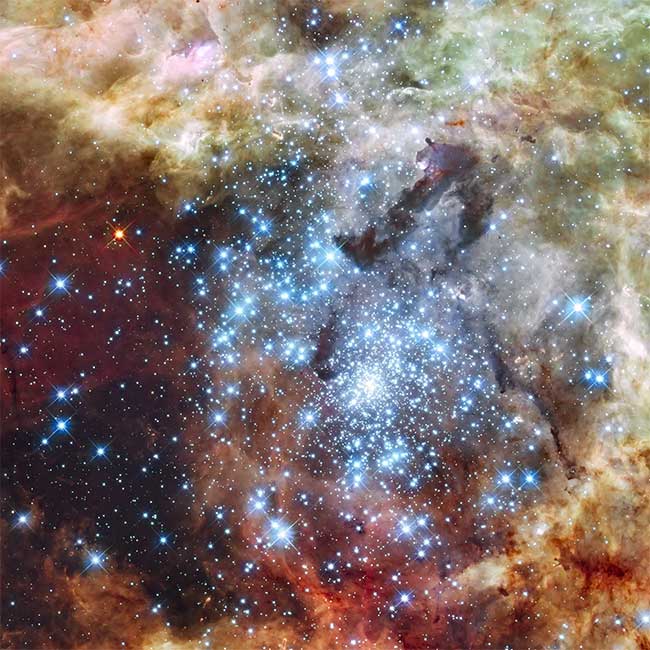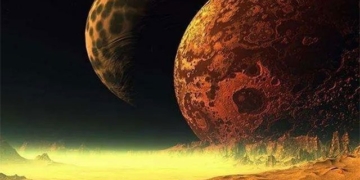An ancient star hidden within the “satellite” galaxy of the Milky Way, belonging to the second generation of stars, formed just after the “Big Bang” event.
Astronomer Anirudh Chiti from the University of Chicago and his colleagues have identified LMC-119, one of the oldest known stars outside the Milky Way galaxy, which formed only 800 million years after the Big Bang.
LMC-119 is located in the dwarf galaxy known as the Large Magellanic Cloud (LMC), a satellite galaxy of the Milky Way.

Image from the James Webb Space Telescope capturing the 30 Doradus nebula, a chaotic star-forming region within the Large Magellanic Cloud – (Photo: NASA/ESA/CSA).
The study published in the scientific journal Nature Astronomy states that LMC-119 is currently 13 billion years old, belonging to the second generation of stars formed after the Big Bang that birthed the universe.
The first stars born from the chaotic remnants of the post-Big Bang era lived and died billions of years ago, making it impossible to recount the story of the early universe directly.
However, traces of these stellar ancestors are preserved in the second generation of stars that have formed and exist today.
LMC-119 is precisely what scientists are searching for, as it still retains the remnants of the cloud of gas and dust from which it was born, specifically the fragmented remains of the first generation of stars – the “children of the Big Bang.”
According to the widely accepted theory, stars are the entities that enriched the chemistry of the universe. The first generation of stars was massive objects formed from the only abundant elements existing at that time: about 75% hydrogen and 25% helium.
However, the cores of stars act as magnificent reactors, where heavier elements are forged.
When stars die, they explode, releasing these heavier elements into the gas and dust clouds, subsequently forming new stars with more diverse compositions. These new stars continue to forge even heavier elements in their cores.
Through many generations of stars, the universe has become incredibly rich in terms of chemistry, allowing for the birth of the Sun, which formed from a protoplanetary disk containing a vast array of chemical elements.
Young planets, including Earth, around stars born after the Sun can now possess a periodic table with hundreds of elements.
Therefore, LMC-119 serves as authentic evidence to prove and further clarify the inception of this stellar evolution theory.
Some ancient stars like this have been found in the Milky Way, but this is the first time researchers have been able to study such a phenomenon in another galaxy.
This ancient star is located much farther away from us, having formed 13 billion years ago, at a distance of up to 6 million light-years, belonging to a primordial galaxy that has likely merged with the LMC.
The LMC galaxy itself is continuously barreling toward the Milky Way. As a result, this star is currently only 160,000 light-years away from us, making it observable by telescopes.
It is expected that in about 2 to 2.4 billion years, this satellite galaxy – including the aforementioned ancient star – will collide with the Milky Way, an event that could potentially displace Earth from its current position in the Solar System.


















































